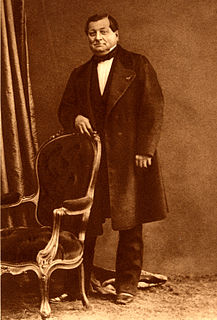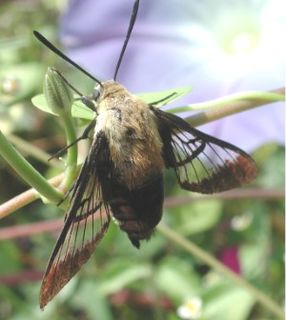
Hemaris is a genus of sphinx moths in the subfamily Macroglossinae, which is native to the Holarctic. Their main host plants are herbs and shrubs of the teasel and honeysuckle families. Moths in genus Hemaris are known collectively as clearwing moths or hummingbird moths in the US and bee hawk-moths in Britain. The related Old World hummingbird hawk-moths, genus Macroglossum, are similar in appearance and habits. Both genera have tails that are provided with an expansile truncated tuft of hairs, but only Hemaris has the disc of the wings transparent, as these scales are dropped soon after eclosion.

Agrotis is a genus of moths of the family Noctuidae. The genus was erected by Ferdinand Ochsenheimer in 1816. A number of the species of this genus are extinct.
Chelis is a genus of tiger moths in the family Erebidae.

Orthonama obstipata, the gem, is a moth of the family Geometridae. The species was first described by Johan Christian Fabricius in 1794. It is common in continental Europe and adjacent lands, though in the northeast, its range does not significantly extend beyond the Baltic region and it is absent from northern Russia. This well-flying species is somewhat prone to vagrancy and able to cross considerable distances of open sea; it can thus be regularly found on the British Isles and even on Iceland.

Eupithecia tantillaria, the dwarf pug, is a moth of the family Geometridae. It was described by Jean Baptiste Boisduval in 1840. The species can be found in the Palearctic ecozone.
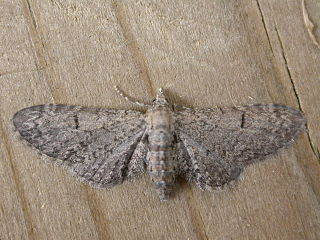
Eupithecia ultimaria, the Channel Islands pug, is a moth of the family Geometridae. The species first described by Jean Baptiste Boisduval in 1840. It can be found in Europe, where it is found in Portugal and Spain, coastal western and southern France, Italy, the Mediterranean islands including Cyprus and Greece. It is also found in southern England and the Channel Islands. Furthermore, it is present in North Africa, Lebanon, Israel, Iraq and Iran.

Ectropis is a genus in the geometer moth family (Geometridae). They are mostly paleotropical, but also plentiful in Australia and extend into Asia. Only one species – or cryptic species complex – is found in Europe. There are about 100 known species in this genus.

Heliothea is a genus of moths in the family Geometridae erected by Jean Baptiste Boisduval in 1840.
Lycia is a genus of moth in the family Geometridae.
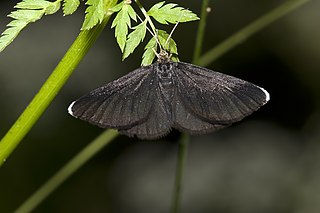
Odezia is a monotypic moth genus in the family Geometridae erected by Jean Baptiste Boisduval in 1840. Its only species, Odezia atrata, the chimney sweeper, was first described by Carl Linnaeus in his 1758 10th edition of Systema Naturae. It is found in the Palearctic.
Phyllometra is a genus of moths in the family Geometridae erected by Jean Baptiste Boisduval in 1840.
Thetidia is a genus of moths in the family Geometridae.
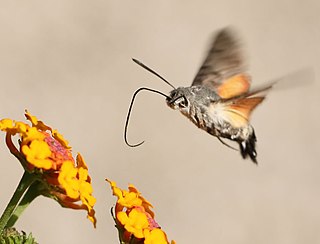
Macroglossini is a tribe of moths of the family Sphingidae described by Thaddeus William Harris in 1839.

Gonipterus is a genus of weevils in the family Curculionidae. There are approximately 20 described species in the genus, most of which are native to Australia. They are all plant feeders and many are specific to a single host species. Gonipterus gibberus and Gonipterus scutellatus infest a number of species of Eucalyptus and have spread to other parts of the world where these trees have been planted.
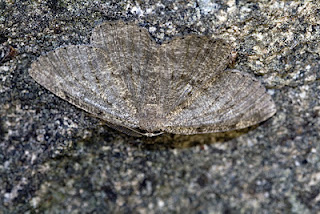
Gnophos dumetata, the Irish annulet, is a species of moth in the family Geometridae. It is found in large parts of Europe, except Great Britain, Portugal, the Benelux, Switzerland, Bulgaria, Fennoscandia and the Baltic region. It is also found from north-western Africa to Armenia, Dagestan, and the south-western part of the former Soviet Union.
Eupithecia pauxillaria, the parsimonious pug, is a moth in the family Geometridae. It is found in most of Europe, except Ireland, Great Britain, Portugal and northern Europe and the central part of the Balkan Peninsula.

Sterrhini is a tribe of the geometer moth family (Geometridae), with about 825 species in 19 genera. There are also 6 genera with 36 species tentatively associated with the tribe. The tribe was described by Meyrick in 1892.
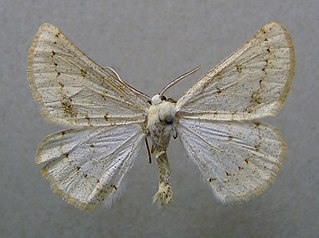
Dyscia conspersaria is a moth of the family Geometridae first described by Michael Denis and Ignaz Schiffermüller in 1755. It is found in south-eastern Central Europe and Asia Minor.

Caradrina selini is a moth of the family Noctuidae. It was described by Jean Baptiste Boisduval in 1840. It is found in most of Europe, North Africa and the Near East.
Coenotephria ablutaria is a moth of the family Geometridae. It was described by Jean Baptiste Boisduval in 1840. It is found in Spain, France, Italy, Austria, Switzerland, Slovenia, Bulgaria, Romania, Serbia, Croatia, Albania, the Republic of Macedonia, Greece, Ukraine, as well as on Sardinia, Corsica, Sicily, Malta, Crete and Cyprus. Outside of Europe, it is found in Asia Minor and the Near East.

